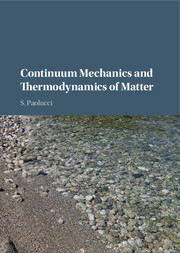2 - Tensor analysis
Published online by Cambridge University Press: 05 February 2016
Summary
Tensor analysis is the language used to describe continuum mechanics. Physical laws, if they really describe the real world, should be independent of the position and orientation of the observer. Two individuals using two coordinate systems in the same reference frame should observe the same physical event. For this reason, the equations of physical laws, which are tensor equations, should hold in any coordinate system. Invariance of physical laws to two frames of reference in accelerated motion relative to each other is more difficult and requires general relativity theory (tensors in four-dimensional space-time). For simplicity, we limit ourselves to tensors in three-dimensional Euclidean space. We will not consider tensors on manifolds (curved spaces) in the main text. This topic is discussed in Appendix D.
We will discuss general tensors on an arbitrary curvilinear coordinate system, although for the development of continuum mechanics theory, we will use Cartesian tensors. For the solution of specific problems, orthogonal curvilinear coordinates and indeed rectangular coordinates will be used.
In three-dimensional space, a scalar quantity has the same magnitude irrespective of the coordinate system. A vector may be visualized as an arrow that has length equal to the magnitude of the vector and that is pointing in the direction of the vector. It has an existence independent of any coordinate system in which it is observed. Thus a vector is unchanged if it is moved parallel with itself. Two vectors that have the same direction and length are equal. They do not have to have the same origin. In vector operations, we shift the vectors so that they have the same origin. A vector of unit length is called a unit vector. A second-order tensor is a quantity with two directions associated with it. Although it cannot be visualized simply as an arrow, it also has an existence independent of the coordinate system. This remains true for tensors of arbitrary order. It is precisely this independence of the coordinate system that motivates us to study tensors.
Review of linear algebra
Notation: All scalar quantities will be denoted using the lowercase italic font. Matrices will be denoted by the uppercase (not bold) italic font. Vectors and higher order tensors are denoted by the lowercase and uppercase bold fonts, respectively.
Information
- Type
- Chapter
- Information
- Continuum Mechanics and Thermodynamics of Matter , pp. 13 - 72Publisher: Cambridge University PressPrint publication year: 2016
